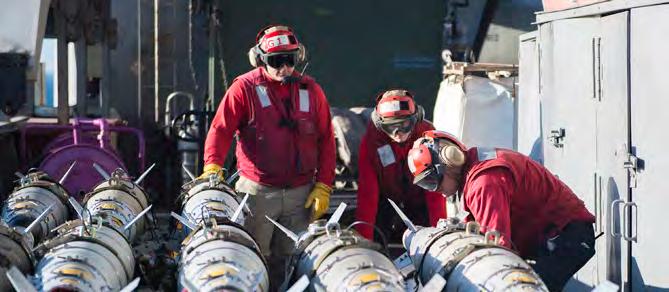
9 minute read
Ten Questions All Aviation Maintenance Leaders
Ihave had the privilege to be associated with Naval Aviation Maintenance for more than three decades now. This includes duties in just about all facets and levels of leadership. From Vids Writer to CNATTU CO, I was exposed to myriad examples of good and bad practices that helped form my way of thinking.
This business is pretty amazing and very complex. We strive, and sometimes struggle, to meet the production goals that result in successful mission accomplishment. No matter the level of maintenance, we pride ourselves on doing it correctly and “by–the-book”. Those practices equate to doing it safely, and meeting the mission safely is the goal of every leader in our enterprise. So why do we consistently let unfortunate events resulting from bad decisions creep back in to our maintenance practices? Why are we running support equipment into airplanes?
Advertisement
Why are we damaging doors and flight control surfaces at an alarming rate? Why are we still using flimsy little fingers to align holes in much harder metal fittings (yes, for those of you that know me – I am missing a part of a finger - NO it wasn’t from that!)?
I say “we” because if these events are happening in our outfits, and they are, leadership needs to be accountable for correction and prevention. There are many reasons why these adverse events are happening under our watch. However we have the means to prevent them.
So here’s a list of 10 “golden” questions that have helped me focus myself and my peers build a culture of professionalism and quality over the years:
10 Questions All Aviation Maintenance Leaders Should Ask
1
Do you lead by example? Trust me, the more senior you are, the more people are watching you.
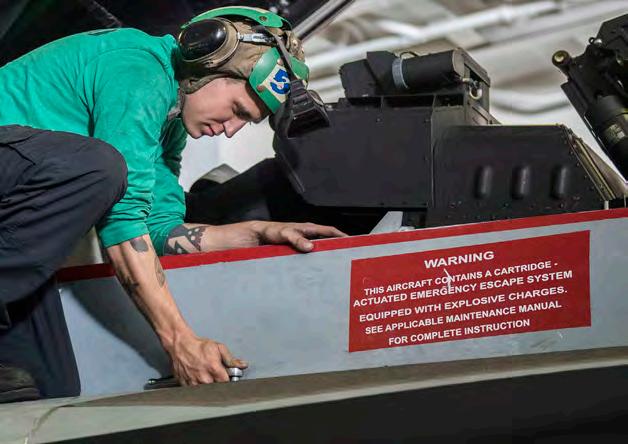
Do you give your people time to do proper maintenance? Real time, like the book says – not “I used to be able to do it in this amount of time”. 2 3 Do you set high expec tations or practice - acceptance of low standards? Something I learned a long time ago - accept mediocrity and you’ll get exactly that. Set high goals!
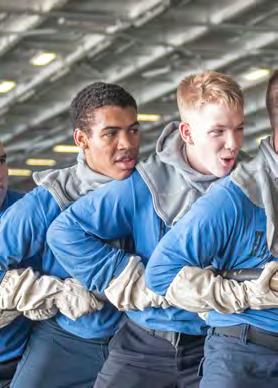
How are your communications skills? Are you 4 open to other opinions and suggestions or are you too “experi- enced” to listen to others?
5
Do you believe in training and putting it to task? Never stop learning - those that stop learning, fail! School house training is the tip of the iceberg. Real training happens on the flight line/deck, and in the work center. Allow your CDI time to train his replace- ment. Encourage, prioritize and build training it into planning.
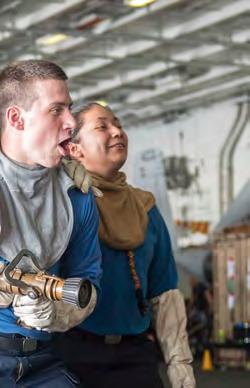
6
Are your leaders in the right places? Are they qualified and ready to be in that position? That can be a really hard question with difficult solutions!
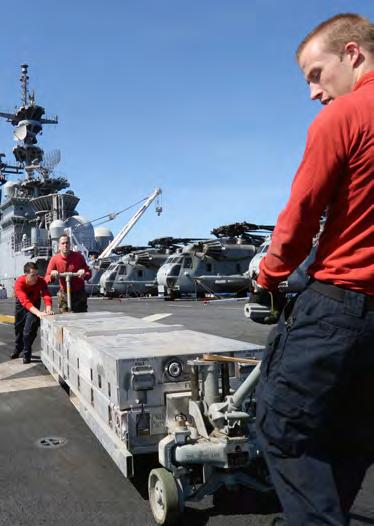
7How do you do the basics? Do you correct people when the publication is not on the airplane? How about when the pre-op isn’t signed and the paperwork isn’t right? What happens when you see a technician with a screwdriver and flashlight in their pocket instead of a full tool pouch?
9Do you practice TCRM/ ORM or are they buzz words? ORM really works when given a chance.
8Do you do preinspections tiger teams or program reviews? If so, why? The expectation should be that we are always inspec- tion ready. Leadership involvement at all levels should be constant and correct. If we wait, we have already failed. Again, think about that. A side-note, if you do get kicked in the knees during an inspection because you were not quite prepared, it’s okay in my opinion - as long as you learn from it.
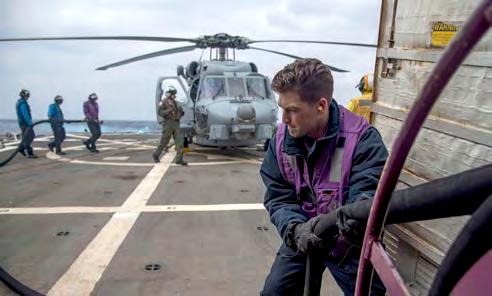
10 Are your people proud of what they do and where they work? Do they have REAL ownership in their hangar, airplanes, test bench, work center, etc.? Pride and ownership makes a big difference in professionalism and accomplishment.
So there you go. Sadly, countless WESS reports, HAZREPs, assessment results and OPREP-3’s prove that in far too many cases, these questions and the associated answers are not practice.I am confident that one thing that is common across all of our lists is that doing Naval Aviation Maintenance right takes time. Training takes time, doing a pre-turn ORM brief takes time, following a publication step by step takes time.
Trust me, once a positive and just culture is established and all this invested time turns into efficiency and safety, you, or possibly your relief will realize the fruits of that investment. Leaders; stay engaged, train your folks, and take the time to give the time. It’s worth it!
SHOCKED “ “ I WAS
As I reported to work, I was informed our integrated weapons team’s leader (IWTL) was not feeling well and I may be responsible for the eve- ning’s required release and control (R and C) Checks.At first glance the process looks easy, however it can be time consuming and cumbersome. It involves several cables, a long checklist, and a few important steps, but nothing I hadn’t done hundreds of times before.
The first of two R and Cs were performed by the IWTL with no incident. He man- aged to get the second one set-up before he “tapped out” and asked me to finish them up. I walked to the flight deck and began verify- ing everything was set up on the aircraft. For those unfamiliar, an R and C is used to verify the weapon system stations are communicat- ing with the aircraft properly.
When performing the R and C check, it is common to check multiple stations using the same test gear. After one station’s R and C is checked, the test gear is moved to the next weapon station for the next check. Depend- ing on the aircraft configuration, between one to five stations will require testing. This par- ticular aircraft was going to involve running an R and C on station one followed by the same test on the opposite wingtip station 11.
This setup requires connecting the aircraft weapons maintenance (AWM-103B) test set to station onewhile also connecting the AWM-103B to aircraft power via a connected W1 power cable. At the completion of the R and C on station one, it is common to move the AWM-103B to the next station with power still available via the W1 cable. I have completed or supervised this evolution count- less times. However, I was not observing what was out of the ordinary this time.
The test on station one ran without a glitch. As my team member grabbed the AWM-103B to remove it from station one, he received an electrical shock. At the time, he failed to notify me or anyone else of the jolt, so we continued on with the release and control checks.
We completed the rest of the night’s checks without issue. When I returned to work the following night, I was informed that my team member had been shocked the night prior and made a visit to medical due to numbness in his arm. My immediate question was “when and how did he get shocked?”
The next two days involved me testing and retesting gear as I chased an intermittent stray voltage gripe. At no point should anyone
be shocked by touching the housing of the AWM-103B, but my suspicions pointed me to a fault inside the test gear.
I went through multiple subcomponents of the AWM103B and still couldn’t figure out what was causing the intermittent stray voltage. Then I noticed a blue spark while disconnecting the W1 cable from the test set. I was shocked! Not an electrical shock, but rather I was surprised from suddenly seeing a spark in my face. I repeated the motions to verify I wasn’t seeing things. The spark came from the W1 cable connector touching the lanyard of the connection point dust cap. It meant that the test set’s housing was live!Other team members including myself had contact with the AWM-103B, so why hadn’t we been shocked? Further investigation revealed when the test set was being removed, my team member also had his arm resting on the launcher.
This created a conduit between the test set and the grounded aircraft. We were fortunate no other instance such as this occurred with other team members. Now, the more important question to answer was why the AWM103B’s housing was live. After a thorough inspection of all the test gear attached to the test set, I discovered the power W1 cable connected to the utility power of the aircraft had shorted to shielding and ultimately “electrified” the AWM-103 housing.
There are no procedures to check this cable or determine the aspect of the housing. Even with a thorough visual inspection, there is little chance of noticing the
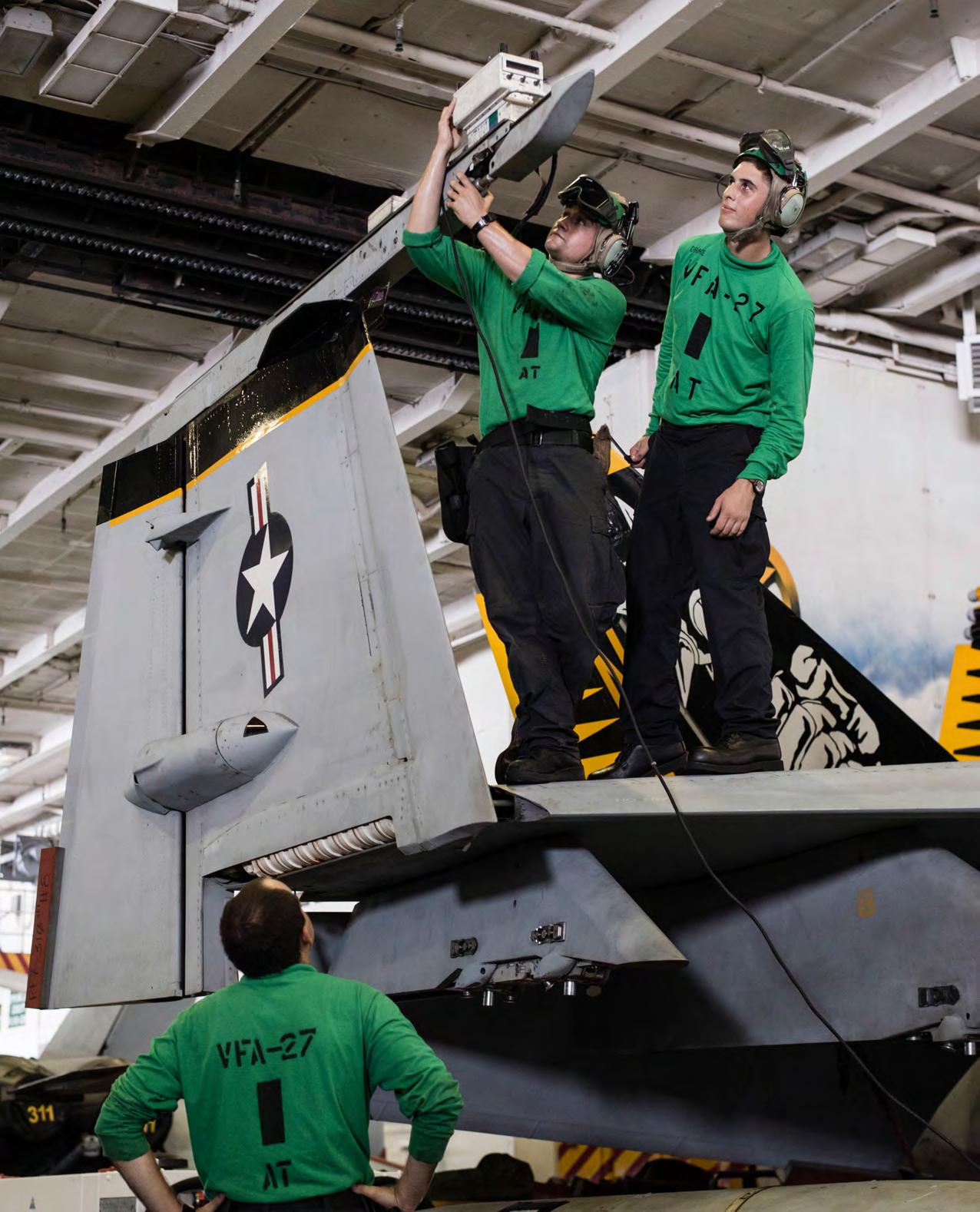
cable was shorted to shielding. In addition, the A1-F18EALWS-220 checklist is used for all R and C checks. Following the checklist, it is normal to keep aircraft utility power on consistently during all R and C checks. If the power cable is shorted, anyone handling the AWM-103B during an R and C is at risk of being shocked. It is uncommon to come across a W1 power cable that is shorted to shielding. However, without inspecting the cable(s) with a multi-meter or adding a step within the LWS-220 to pull the circuit breakers of the utility power when transferring the AWM-103B between stations, there is little certainty of the test set housing’s electrical status. Luckily our team member was cleared for work that evening and had no long term negative effects.
We were fortunate no one else was shocked while troubleshooting the issue during the days that followed the incident. Even though it is not included in the checklist, I now pull the circuit breakers for the utility power prior to moving the test set. It adds a few seconds to an already cumbersome checklist, but the time spent is negligible compared to one of my team mates suffering a shock.
Finally, all shocks need to be reported immediately and the victim taken to medical. My team member ended up only suffering an electrical jolt through his arm. However, had the shock traveled through his organs serious complications could have resulted.
Complications can occur hours or even days later. It is always best to walk to medical on your own two feet than to end up the subject of a medical emergency.
Sailors with VFA-27 Royal Maces perform routine maintenance on an F/A-18E Super Hornet using AWM-103B gear. (Photo by LT Christopher Nigus)










